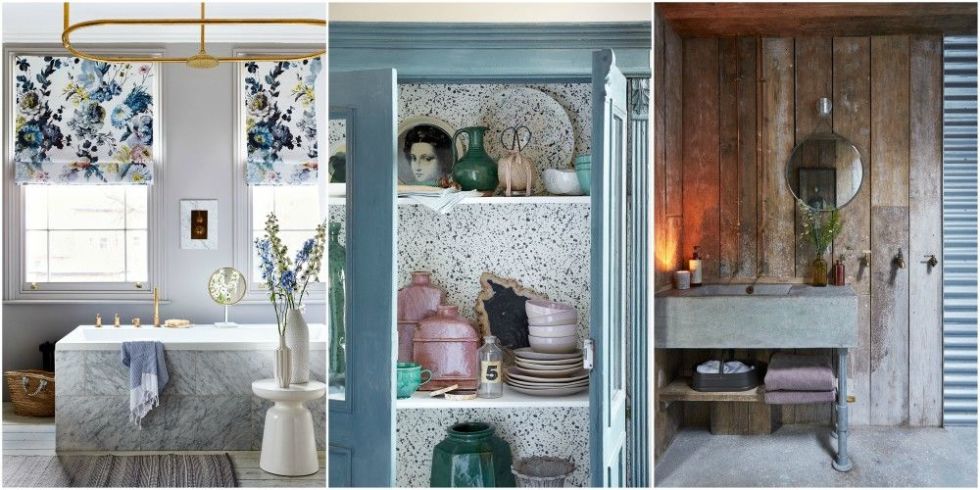From colour to texture and furniture to pattern, these country-style interior design and decorating tips will get you the modern country look in you own home.
Once upon a time, a country home was synonymous with traditional interiors and furnishings, but now bold looks and contemporary design hold equal sway…
1. PATTERN
It might be thought by many that a modern country home means an absence of decoration. But introducing pattern can still feel striking and fresh, depending on how it is used. Choosing a floral or botanical motif in an unexpected scale can make a traditional design feel original and new. And enlarged as a mural or canvas, for example, it will look quite dramatic.
Geometrics are also popular choices, from simple chevron and repeating shapes to more detailed filigree patterns on tiles or wallpaper – these have their roots in the Spanish or north African designs commonly seen on encaustic tiles. Pattern looks most striking and modern when it is used simply, keeping the rest of the room fairly plain and making a feature of just one design – be it on curtains, a frieze of tiles on a splashback or in the rhythmic patterns of an encaustic floor.
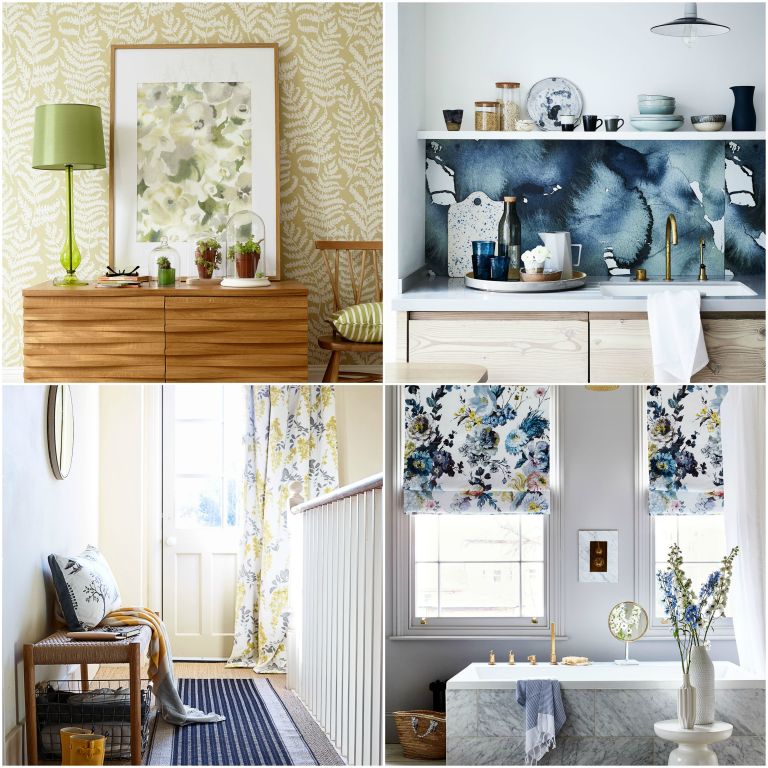
Design tips…
- Traditional florals immediately become sharper and more modern when used in a larger-scale print or monochrome colourway (bottom right)
- A splashback can introduce a measured amount of pattern to a kitchen – use tiles or a decorated panel (top right)
- Canvases or wallhangings can be made to measure, allowing a delicate flower or botanical artwork to be enlarged (top left)
- Keep a room’s decoration restricted to just one pattern or colourway for a clean, simple effect (bottom left)
2. TEXTURE
Rough, organic surfaces, rich in natural patina, are a key element of the modern country look. Previous generations have tended to cover up such imperfections, papering and painting walls to make homes more pristine, but the trend for stripping back to reveal the bones of a property and celebrating the honesty of raw, natural materials has now found favour. Bare plaster or exposed brick can be appealing indoors, or try polished concrete for floors, worktops and even walls. It is warm and silky to the touch, and has depth in its watery, uneven tones.
You could use reclaimed wood to clad walls or drawer fronts in a kitchen for instant character, while soft textiles can add layers of warmth and visual interest in the form of rough, slubby linen, wool and sheep skin. If you don’t have organic textures to reveal or display, add a tactile quality with wall panelling, natural floor coverings, baskets, furniture and textiles or woven wire pieces.
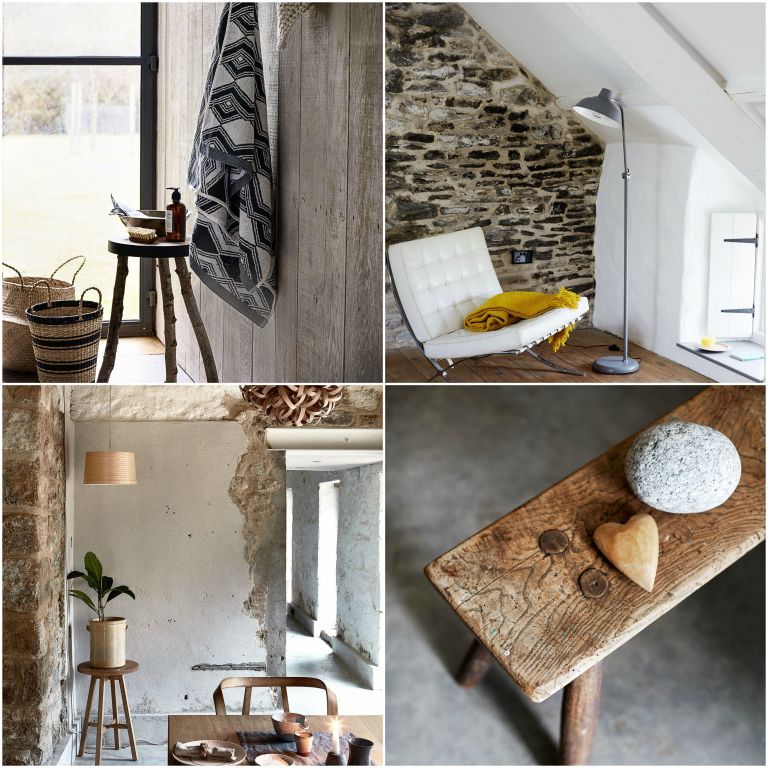
Design tips:
- Contrasting surfaces, mixing sleek and shiny with rough and gritty, heightens textural impact (bottom left)
- Natural materials are well suited to hardwearing areas such as a hall, kitchen or utility room (top left and bottom right). For flooring, try using brick or reclaimed pammets combined with underfloor heating
- If you are renovating, consider leaving some part of your home with a rough finish – such as a bare plaster, brick or stone wall (top right)
3. FURNITURE
The fashion for reworking mid-20th-century designs, from both craftspeople and high-street retailers, is very popular. Look out for design classics or traditional pieces with crisp silhouettes. Often echoing classic items, these tend to be a good fit for country houses, and their crisp, latter-day styling works surprisingly well with a mix of antiques.
Equally, furniture that is not usually seen in a domestic setting can look unique and modern. Current styles that have their roots in industrial design, such as metal and glazed cabinets, cupboards and storage units, are a good example. Painted pieces can often look more up to date than dark wood, though it is possible to mix them together, too.
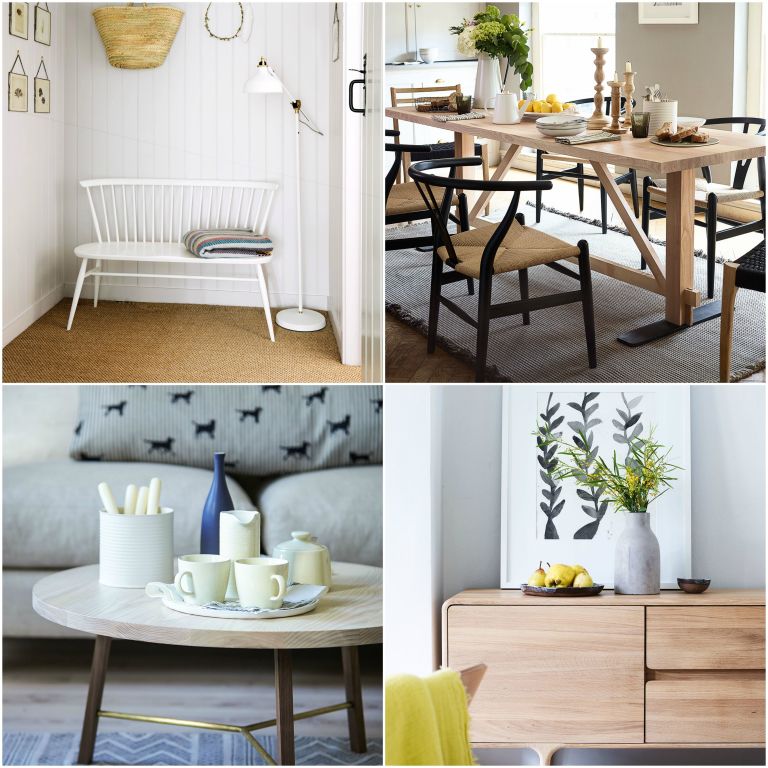
Design tips:
- The pared-back simplicity of a classic Ercol bench will look great in a country-themed hall (top left)
- Pull together a collection of items by keeping them all within a single colour scheme (bottom left)
- Mix old and new to help modern furniture integrate into your home. Try combining the traditional joinery of a farmhouse table with mismatched contemporary chairs (top right)
4. RECLAIMED
The ethos of reusing and repurposing items and materials in interiors has been gaining momentum over the past decade. Recycling makes good sense from an environmental perspective, and can impart character and interest to your home.
Look for pieces that have marks of wear, a patina of age or a backstory that makes them intriguing. Also think about adapting or customising non-domestic pieces – old pigeonhole drawers from a post office or a machinist’s workbench can become really quirky and unusual home furnishings.
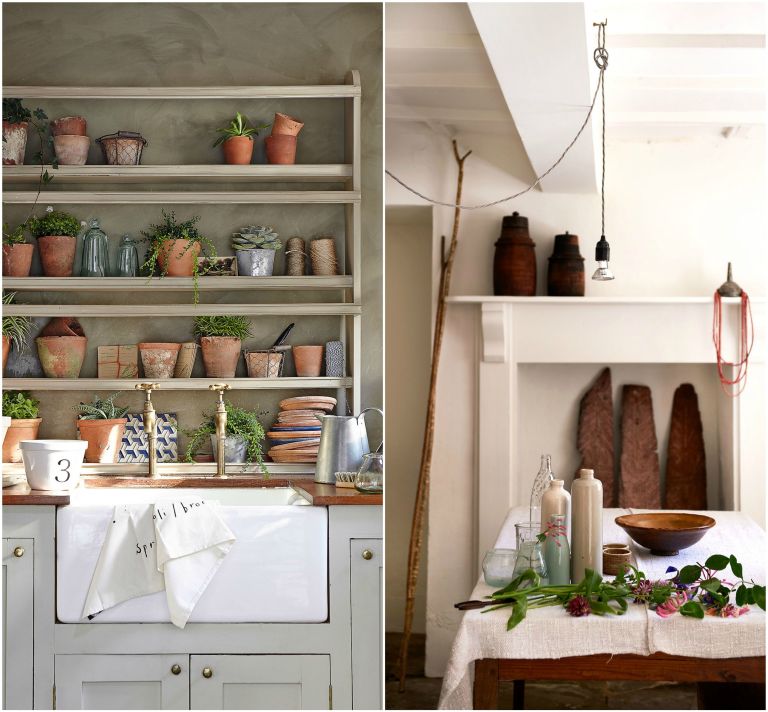
Design tips:
- Deconstructed styles are fashionable for kitchens, with open units and shelving for storage as well as cupboards (left)
- Reclaimed wood makes a beautiful display in its own right (right)
- Turn a sack barrow into a frame for a one-of-a-kind coffee table, or create shelving from wooden crates or scaffold planks
5. COLOUR
Mustard yellow, deep teal blue, chalky blush pink, coral and charcoal are all very popular right now, so introducing these shades into a room will certainly make it feel up to date, but it is also about how and where you use colour. Above all, you should choose shades that you are naturally drawn to, rather than something that is purely fashionable, to ensure you don’t tire of them.
Using deep or intense hues to highlight specific areas, such as alcoves or a single wall, will enhance architectural details and bring atmosphere to an interior. Strong, zingy colours can also be very effective to show off details on furniture or used in well-chosen accessories. A single vibrant painted chair, the underside of a freestanding bath, a rug, the rim of a table or the legs of a chair will all catch the eye and add drama to your space.
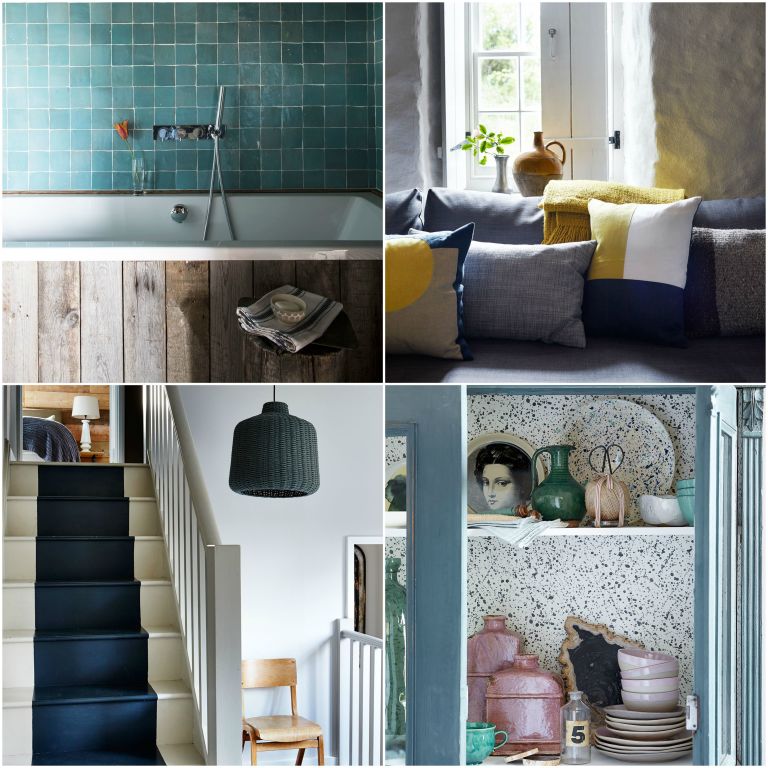
Design tips:
- Use colour to highlight architectural details, beams, a banister or the traffic area on a staircase (bottom left)
- Update kitchen cabinets or a large piece of furniture, such as a cupboard or armoire, by repainting in a fresh shade (bottom right)
- For a restrained effect, try limiting yourself to just one strong tone in a room. Used for textiles or as paint against neutral tones such as white or grey (top right), this will have a timeless appeal
- Create a focus with areas of strong colour, either used on a single wall (top left) or in stripes of toning shades on cupboard fronts and doors




